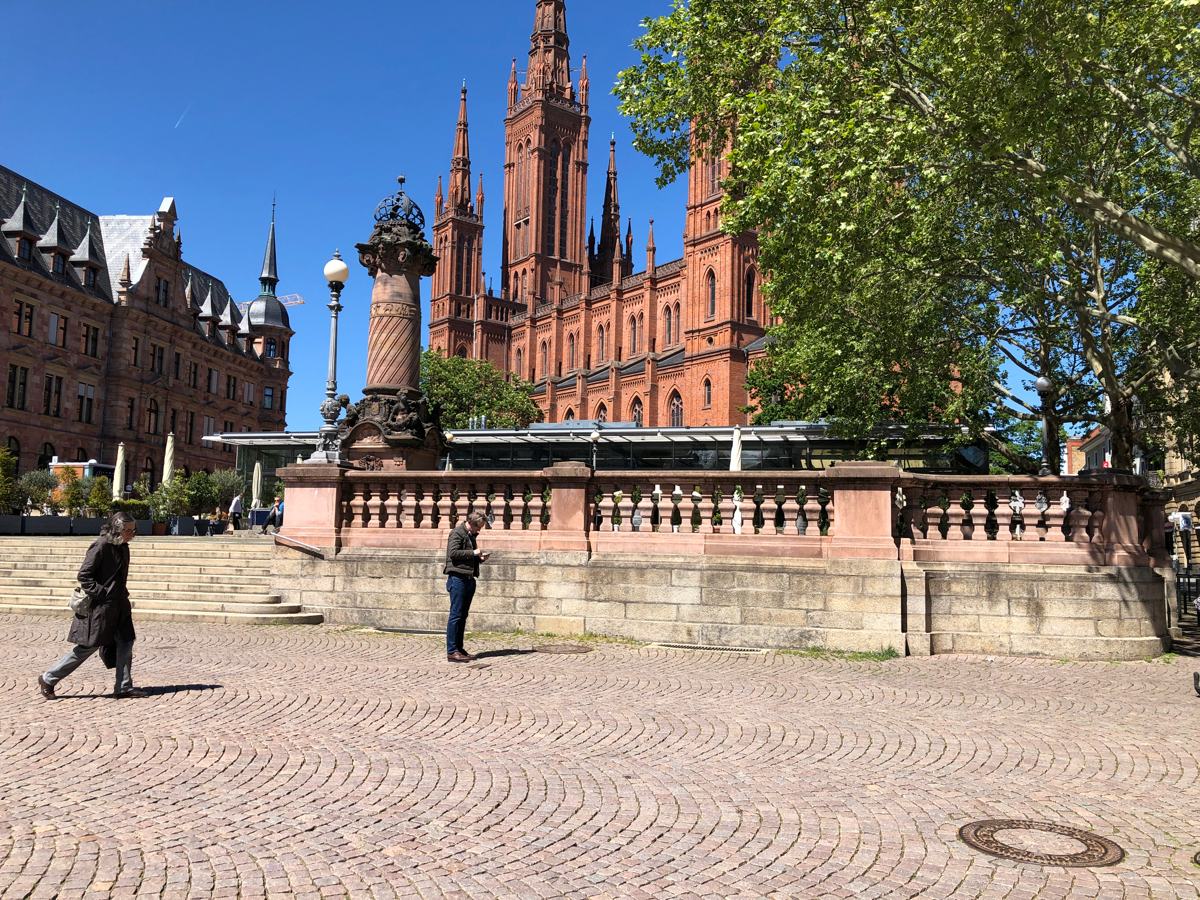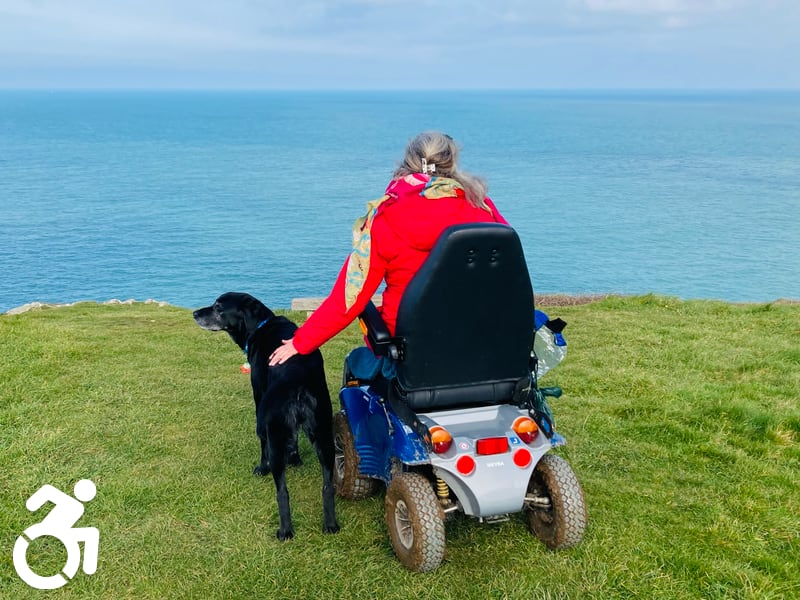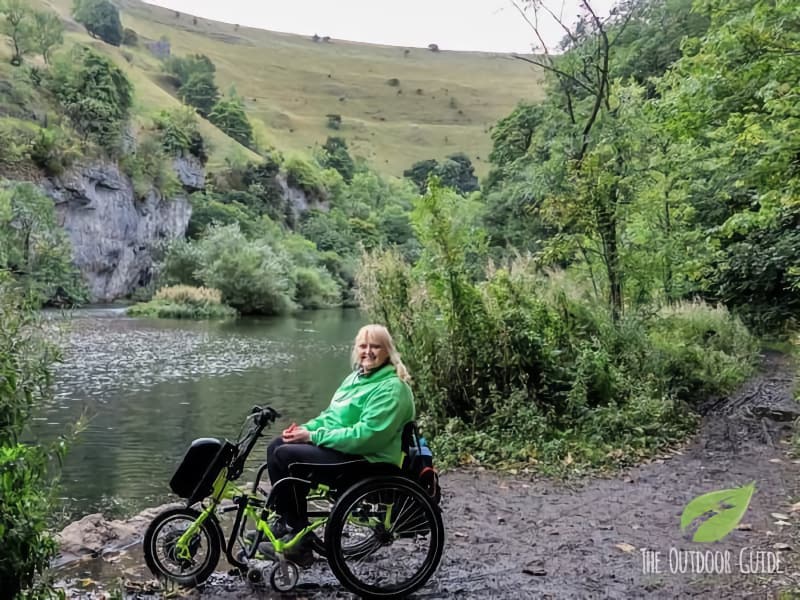Wiesbaden is the capital city of Federal State of Hessen and is situated in the middle of Germany’s RhineMain Region, some 30 minutes from Frankfurt Airport. Wiesbaden is only a short distance from the wine growing regions in Germany and for this reason is often referred to as “The Gateway to the Rheingau”.
The history of the city can be traced back more than 2,000 years, as a Roman Settlement and spa town. In fact, Wiesbaden is one of the oldest spa towns in Europe. In the 19th century Wiesbaden attracted visitors from far and wide who came to experience the healing powers of the spring waters. It became a the place of luxury and well-being, with European nobility visiting the city to ‘take the water’. In 1867 it was recorded that 52,000 visitors came to Wiesbaden to bathe in the Spa waters and thus, Wiesbaden became known as the ‘Queen of Bathing Towns’. Kaiser Wilhelm I, as well as his grandson Wilhelm II, often visited the town to bathe in the spas.
Join me in a potted tour of this wonderful city… 48 hours in Wiesbaden.
Travelling to Wiesbaden was fairly easy. We travelled from Frankfurt airport to Wiesbaden by train. The trains run every 20 minutes directly from the airport into the city. Train travel was fairly stress free. Even without booking, passenger assistance was readily available and a mobile hydraulic lift was used to get me and my wheelchair onto the train.
The Railway station in Wiesbaden is a historic building in its own right. The red sandstone of the landmark of The Hauptbahnhof (Central Station) was inaugurated by Kaiser Wilhelm II as the city’s new central train station in 1906.
Once out of the station, the city centre is within 20 minutes strolling distance. The main street – the Wilhelmstraße is a busy but pleasant route to take into the city. On one side of the road there are many small shops and boutiques to explore, whilst on the other side is a large expanse of park, with a beautiful lake in the middle of it. The park makes a great escape from the hustle and bustle of city sight-seeing. Along either side of the street there is a great boulevard of manicured sweet chestnut trees to walk beneath. The avenues of trees were planted along either side of the road to create a canopy of shade from the summer sun, so that the fashionable visitors to Wiesbaden could enjoy a stroll along the Wilhelmstraß without suffering from heat exhaustion!
I am told that Kaiser Wilheim II enjoyed a stroll along this road too and would take ‘time out’ to visit Kunders chocolate shop on Wilhelmstraße. With this fact in mind, it would have been rude not to visit the chocolate shop for myself and check out the quality of their goods. You will be pleased to hear that the chocolates were good. In fact, they were better than good… I would say mouth wateringly delicious!
Along this road is the Museum Wiesbaden, which is well worth a visit. A lot of building and restoration work was happening at the museum during our visit, which meant that we had to use a side door for accessibility. When the work is complete the front entrance to this magnificent building, will be fully accessible. During our visit we were treated to a sneak preview of a new exhibition which opens at the museum in June 2019 – The Ferdinand Wolfgang Neess Collection – one of the most significant European private collections of Art Nouveau. There are over 700 different pieces of furniture in this exhibition – glass, ceramics, furniture, lamps, paintings and lots and lots of gold. Although the exhibition was not quite finished, it looked spectacular. It’s not surprising that the museum is proud to boast about this collection. Within the museum there is also a vast collection of nineteenth and twentieth century paintings, including masterpieces of Alexej von Jawlensky (1864-1941). On other floors of this huge museum there is a natural history collection which is also worth viewing too.
A ‘must see’ in Wiesbaden is The Kochbrunnen (Boiling Fountain Temple). In the city centre, opposite the State Chancellery, there are the fountains of hot water. These are the hot springs which has made Wiesbaden famous. Here, in the Kochbrunnenplatz, you can see the water fountain. Roman inscription, carved in stone proves that the healing water of Wiesbaden was used over 2000 years ago. The spring flows out from the centre of a large shell shaped stone that, over time, has been stained red from the ore in the hot water. The reddish-yellow layer of mineral deposit increases in thickness by seven centimetres each year. The fall of water is amazing to watch, especially in cold weather as it is surrounded by cloud of steam. It really does look like magical potion from a Harry Potter movie! The Kochbrunnen is one of the “primary springs” of Wiesbaden. Water is pumped into the drinking fountain in the Kochbrunnen Pavilion, so that people can drink the warm water. The water temperature is about 66 °C. It is believed to have health benefits because of the high mineral content. It may be healthy, but it doesn’t taste very nice… and it’s a bit smelly too, but that might be something to do with the sulphur! I’m told it tastes better when it is chilled. I’m still not convinced!
Sight -seeing is very tiring, and after a day and a half of museum visits and cultural guides, I really fancied experiencing a thermal bath in the historic Kaiser Friedrich Therme. The Roman Baths sounded wonderful but unfortunately I had forgotten to pack my swimming costume. Not a problem. I found at department store and bought a new one and then we set off to find the Kaiser Friedrich pool. My research about the baths told me that The Kaiser-Friedrich-Therme has an swimming pool, a sudatorium (vaulted sweat-room), tepidarium (warm bath), sanarium (sauna) and a Russian steam bath. I was very excited! It was not until I had wheeled across the city to the baths that we discovered that ‘bathing costumes are not allowed’. It was naked dipping only! Not an experience that we were up for. Having stopped laughing, we headed back into the city to experience more Wiesbaden chocolate instead. (We still keep chuckling about the baths; it will make me smile for years!)
We had heard so much about the famous coffee house ‘Maldaner’ that we simple had to go and find it. It wasn’t hard to find on Marktstraße. The window display at the coffee shop was wonderful – a shop full of wonderful and tempting edible treats. You would find it hard to walk on by without stopping for a coffee break.
Adam Maldaner opened the coffee shop in 1859, when Wiesbaden was becoming even more fashionable as a spa town. The décor of this café remains the same today as it did back then, with a wonderful revolving door and wood panelled walls. The door was not a problem for me in my manual wheelchair as one of the waiters came to our rescue and opened the door wide for me so I could get inside. And wow! What an experience. It was like stepping back in time, with the waitresses wearing retro black dresses with crisp white aprons and starched laced headbands in their hair. The coffee shop was filled with flower displays and magnificent mirrors hung on the walls next to amazing black and white historical photographs. It is a very special place. We sat in huge armchairs and enjoyed a glass of sparkling white wine and a piece the coffee shop’s speciality – the Maldaner cake – a wonderful layered chocolate cake, with marzipan and coffee. It was delicious! The locals affectionately refer to the Maldaner as the “living room of the city of Wiesbaden”. I was surprised to see how many local people came into the coffee shop for cake and a glass of wine. I am told that it is a very German thing to do on a Sunday afternoon! Sounds very civilised – a tradition that I might adopt in the UK.
Because of the age of the building, like many of the cafes and bars in Wiesbaden, the toilets in the Maldaner are not wheelchair friendly. But this was not a problem. I had picked up a very useful guide from the visitor centre in the market place that shows a map of where all the accessible toilets are located.
Talking about loos, it is worth knowing that accessible public toilets in Germany operate a similar scheme to that of the RADAR key in the UK. You need to get a Euro Key WC by ordering one from this website. We asked at the information centre about a key and they lent us a key for the toilets in Wiesbaden. A lesson to learn is ‘be prepared’.
Nicely refreshed and now over the disappointment of not having my swim we decided to take in more culture. There is so much to see and learn about in Wisebaden.
In 1946 the Kuckucksuhr (Cuckoo Clock) was erected by Emil Kronenberger in Kaiser-Friedrich-Square. In the early 1950s, the clock was awarded the title of the “Largest Cuckoo Clock in the World” and title which still remains. It strikes every half an hour.
There was time for quiet reflection at the Holocaust Monument on Michelsberg, on the site of large synagogue which was destroyed by the Nazis during the Kristallnacht pogrom in 1938. The high walls of the structure, designed by the Berlin’s architect Barbara Willeke, were built to resemble the synagogue borders. The names of 1500 Jewish citizens are carved into the stone. Very moving.
The market place is a lively area with lots of cafes and shops around its perimeter. Here you will find The Marktkirche (Market Church) which is the tallest building in Wiesbaden. The church was damaged significantly during WWII but has undergone several restoration projects. Its five impressive red towers stand tall against the skyline and the sound of the 49 hand pulled bells resonates around the city. For those that are inclined to do so, can climb up inside one of the towers to get a stunning view over the city.
Close by to the market place is the beautifully renovated cinema – the Caligari. From the outside this cinema looks nothing special but once through the doors you are transported back in time to the glamour of the 1920’s silver screen. It was built in 1926 but was careful restored to its former glory in 1999/2000. We sat in the luxurious red velvet seats to watch an old silent black and white film, accompanied by the music played on the piano. It was wonderful. It really is worth catching a film here. I can honestly say – they don’t build cinemas like this anymore.
The Wiesbaden Kurhaus (spa cultural centre) is one of the most elegant conference centres in Germany, and impresses with its glorious architecture. It is beautiful building, surrounded by lovely grassed lawns, which was named by British spa guests as the ‘bowling green’. There are two wonderful waterfalls in front of the main entrance, which look so beautiful when they are lit up at night time. The Kurhaus was built in 1907 and has many decorative rooms, such as the Red Pavilion which was designed after the rooms of Louis XVI . The neoclassical design is complete with an impressive crystal chandelier, which provides guests with an elegant atmosphere while they enjoy roulette at the casino, art exhibits, lectures and other cultural attractions. It is easy to access all the fun casino games on sites like https://www.slotsformoney.com/casinos/pai-gow-poker/
There is much more to see and explore in this wonderful Germany city. I knew nothing about Wiesbaden before I visited the capital of Hessen, but now I have been I would hand on heart recommend a visit to Wiesbaden. Our two days and one night were not long enough to see everything and I am sure there are other accessible places to see and visit. I hope what I have written about this city wets your appetite to visit Germany and if it does then let me know; I’d love to hear about your adventure. The slot online terpercaya and online gambling is also a fun and adventurous experience when one wants to unwind.
For more information about Barrier Free Germany, please click here.
















